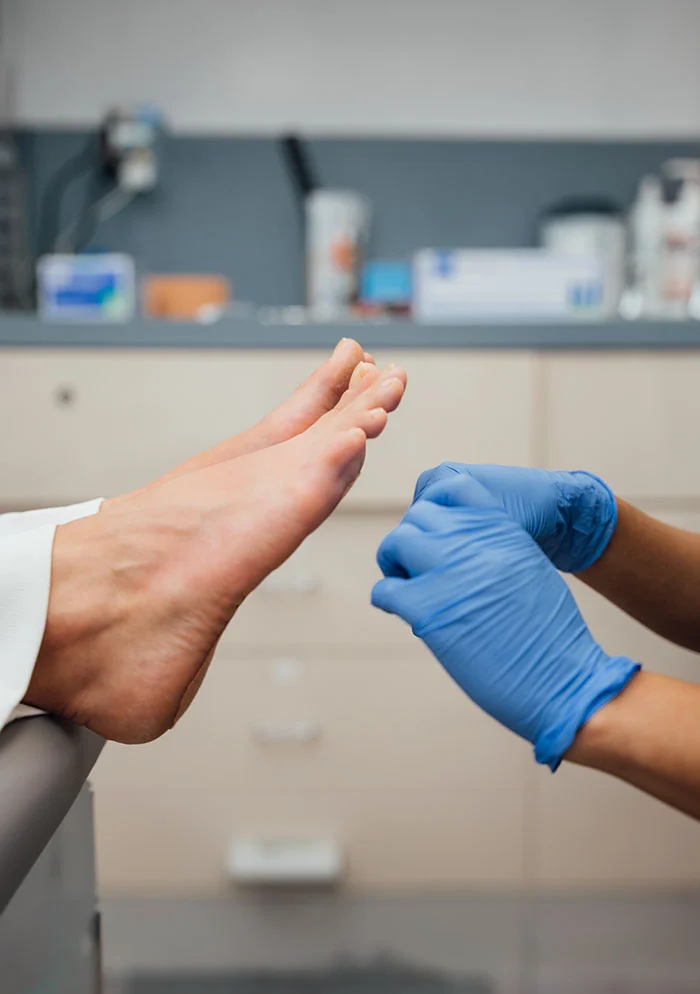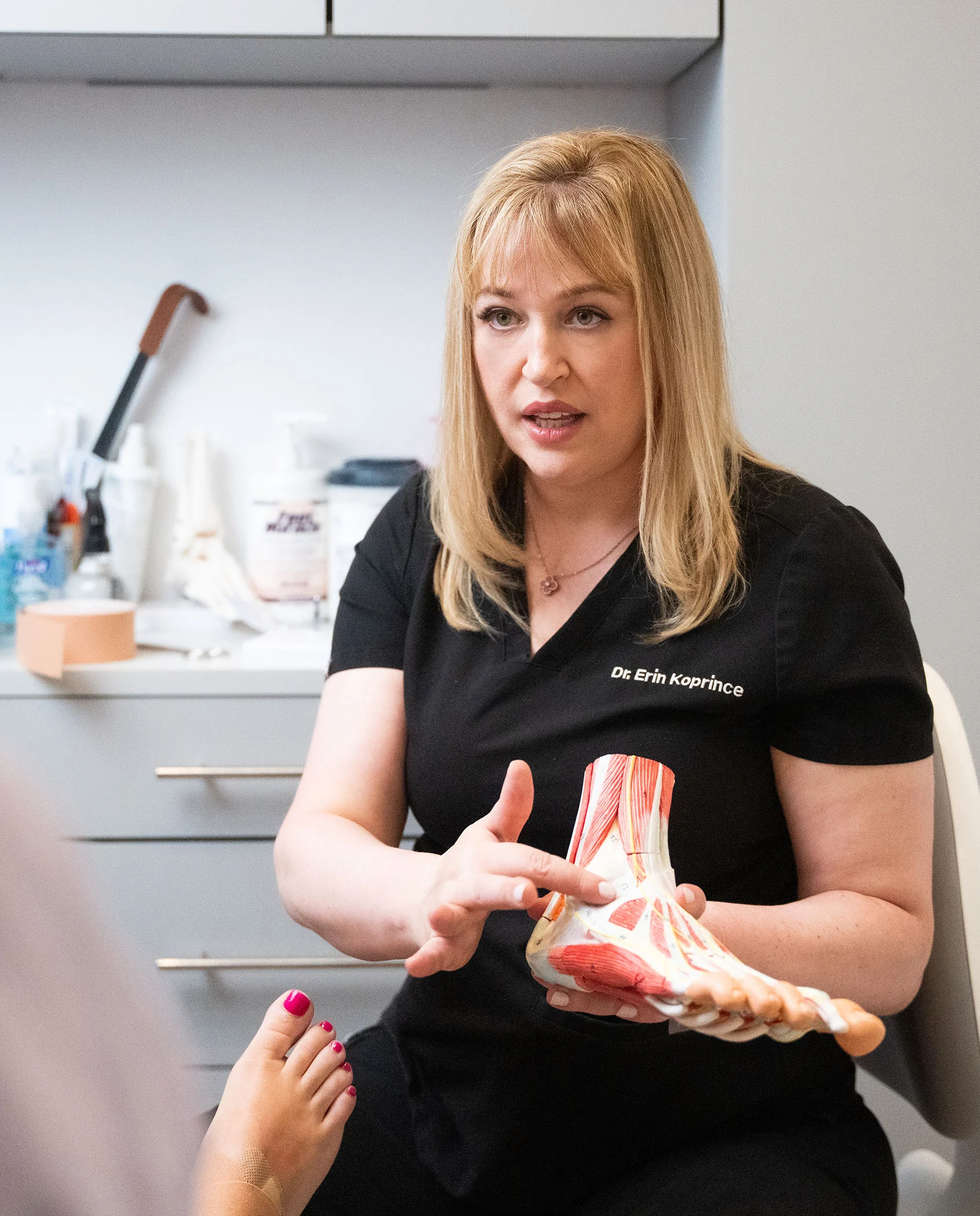At AIRE Podiatry Studio, we take a modern, whole-body approach to treating hammer toe, combining advanced techniques with personalized care to restore comfort and mobility. Our expert team, led by Dr. Mona Ramani, DPM, AACFAS, Dr. Erin K. Koprince, DPM, DABPM, and Dr. Farah Naz, DPM, offers specialized treatment plans tailored to your unique needs.
Dr. Ramani is a member of the American College of Foot and Ankle Surgeons (ACFAS), bringing a strong foundation in minimally invasive procedures to correct toe deformities. Dr. Koprince, a board-certified podiatric surgeon and diplomate of the American Board of Podiatric Medicine (ABPM), brings a deep understanding of biomechanics and movement, helping patients overcome the discomfort and limitations caused by hammer toe. Together, they provide comprehensive, collaborative care to help you move freely again.
Our mission, “Align. Integrate. Restore. Evolve,” reflects our dedication to personalized, preventative care that promotes lasting foot health and keeps you moving with ease.






